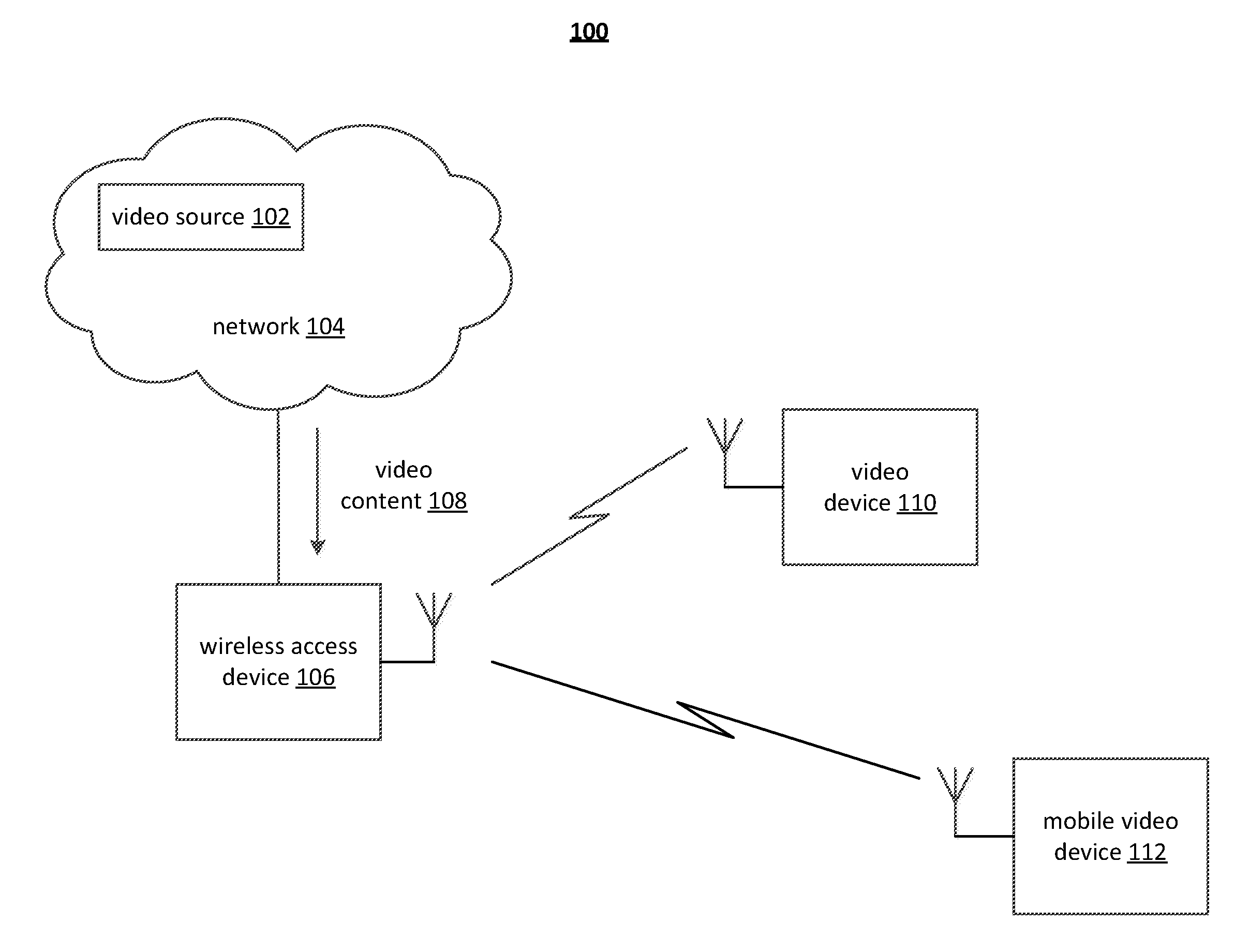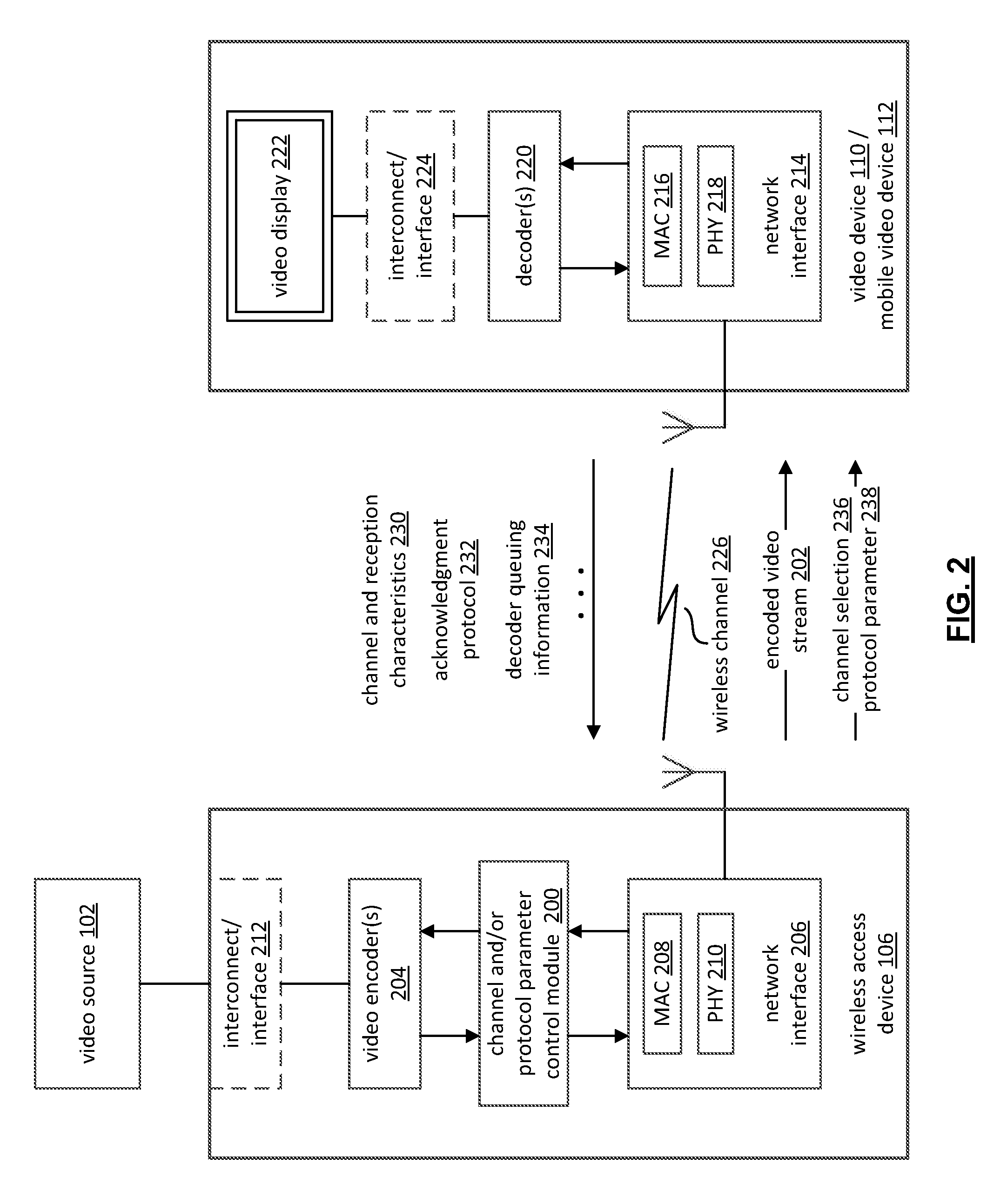Dynamic Wireless Channel Selection And Protocol Control For Streaming Media
a wireless channel and streaming media technology, applied in the field of wireless communication systems and the transmission of video data, can solve problems such as redundancy of codes and retransmissions, difficulty in providing an acceptable user experience, and perceived video quality
- Summary
- Abstract
- Description
- Claims
- Application Information
AI Technical Summary
Problems solved by technology
Method used
Image
Examples
Embodiment Construction
[0026]A novel approach is presented herein for optimizing video transmission over a packet-based, lossy communication medium / channel in order to improve the end user experience. The novel approach is related to the use of transmission delay / packet loss information and channel utilization statistics to adaptively regulate wireless channel and / or transmission protocol selection so that improved error concealment, error resilience and bandwidth usage is achievable during, for example, transmission of a media / video stream having a relatively constant bit rate.
[0027]Although packet-based networks can provide high throughput, there is often no guarantee of low transmission delays, constant throughput and a low level of net data losses under “noisy” channel conditions. Channel conditions can be influenced by a variety of factors, including signal strength, pattern noise (e.g., microwave bursts), interference from other carriers, and network congestion on specific nodes. Transient impulse n...
PUM
 Login to View More
Login to View More Abstract
Description
Claims
Application Information
 Login to View More
Login to View More - R&D
- Intellectual Property
- Life Sciences
- Materials
- Tech Scout
- Unparalleled Data Quality
- Higher Quality Content
- 60% Fewer Hallucinations
Browse by: Latest US Patents, China's latest patents, Technical Efficacy Thesaurus, Application Domain, Technology Topic, Popular Technical Reports.
© 2025 PatSnap. All rights reserved.Legal|Privacy policy|Modern Slavery Act Transparency Statement|Sitemap|About US| Contact US: help@patsnap.com



